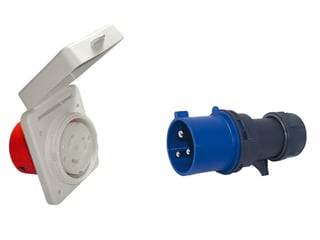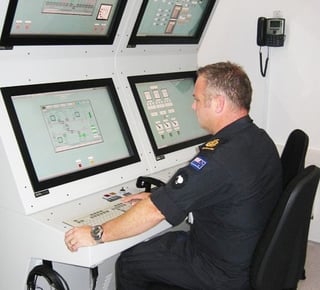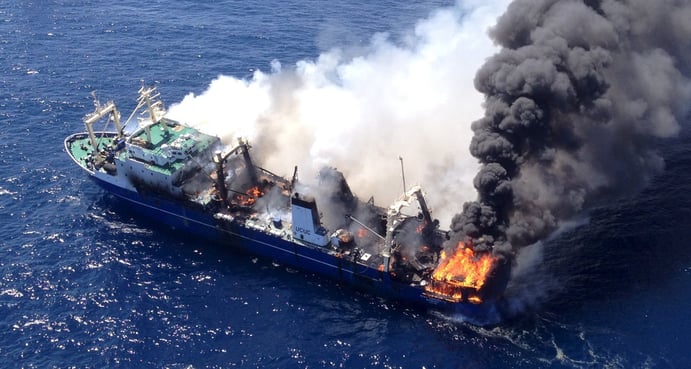
A modern shipboard power system (SPS) is jam-packed with digital control, protection and communication hardware and software. Moreover, in the future, the complexity of control, protection and communication systems is only going to increase as the ships are becoming smarter and more electric.
With all the undisputed benefits of more electric SPS, we are witnessing costly commissioning delays of the most sophisticated vessels due to issues with SPS software. Such problems are to be expected, since the increased complexity of SPS requires the latest generation of testing tools such as Marine Microgrid Testbed (MMT), which is based on the controller hardware in the loop (C-HIL) testing methodology.
Nowadays, C-HIL methodology is most widely applied in automotive and aerospace industries. Recently, it is finding a wider adoption in testing advanced shipboard power systems as well. In short, C-HIL methodology tests the actual SPS controller hardware and software by connecting it to an emulated power hardware of the SPS.
Therefore, MMT provides direct insight into the behavior of controller software at a fraction of time and cost it usually takes during mooring and sea trials, and with incomparably better test coverage under all operating conditions.
1. Interoperability issues

Every ship is unique. Even when it belongs to the same class, individual components of the SPS are often different. This is unavoidable because SPS components continuously evolve. With MMT, it is now possible to fully test SPS control software and hardware long before mooring and sea trial. With a scalable C-HIL platform such as MMT engineers can assess the behavior of the system, as well as identify and fix all interoperability issues. Because only control, protection and communication systems of the SPS are used, this can be done even before SPS components are installed, and, because there is no real power used, testing is perfectly safe, repeatable and can be automated.
2. Model based sourcing of SPS components and systems
Procurement is not just a cost function: it must support the ship-builder’s and future ship-owner’s longer term objectives, such as system interoperability and quality, as well as running and maintenance cost. Procurement with MMT in the loop makes it possible for engineering to get involved in the procurement process with their feedback regarding performance, ease of use, compatibility and fit of components and systems. With MMT in the loop, vendors will be requested to deliver mathematical models of their components, as well as their control, protection and communication hardware and software. They can then be thoroughly tested and optimized for the best fit for their intended function in the SPS under more than just purchase price criteria.
3. Engine room simulation for crew training
 The skills of people operating shipboard power systems (SPS) have to be kept up-to-date with new complex features and capabilities, and the most effective way to do that is by means of Marine Microgrid Testbed. However, accurate real-time simulation of the ship’s power system has not been achieved prior to MMT due to a very dynamic nature and complexity of modern SPSs. MMT allows shipbuilders to create digital twins of their ships’ power systems that run in real time with a microsecond resolution. When these digital twins are connected to human interface components of ship simulators, the crew can get a 100% accurate simulation of the system which will be (is) installed on the ship. This way, the training sessions can start while the ship is still being built. Finally, the same Marine Microgrid Testbed can be used for different ships as the C-HIL system can quickly load a different SPS model.
The skills of people operating shipboard power systems (SPS) have to be kept up-to-date with new complex features and capabilities, and the most effective way to do that is by means of Marine Microgrid Testbed. However, accurate real-time simulation of the ship’s power system has not been achieved prior to MMT due to a very dynamic nature and complexity of modern SPSs. MMT allows shipbuilders to create digital twins of their ships’ power systems that run in real time with a microsecond resolution. When these digital twins are connected to human interface components of ship simulators, the crew can get a 100% accurate simulation of the system which will be (is) installed on the ship. This way, the training sessions can start while the ship is still being built. Finally, the same Marine Microgrid Testbed can be used for different ships as the C-HIL system can quickly load a different SPS model.
4. Testing SPS behavior in emergency situations
Safety procedures and automated safety systems on modern ships are complex. Moreover, electrical systems are replacing hydraulic and pneumatic systems, even in safety critical systems such as watertight doors. The safety of the ship in emergency situations now heavily depends on the performance of the shipboard power system (SPS). Prohibitive cost of conventional SPS testing makes full test coverage impractical which leads to a dangerous paradox: the emergency systems are truly tested only during an actual emergency situation. On the other hand, MMT makes it possible to repeatedly test the performance of the SPS in all emergency scenarios in the safety and comfort of the MMT office. With controllers interfaced to the emulated power stage, engineers can trigger any emergency scenarios and thoroughly analyze the SPS behavior.
5. Protection testing

SPSs of modern ships are increasingly more electric. They power shipboard propulsion systems, navigation system, safety system, as well as hotel loads and more. The SPS therefore has to be robust enough to survive emergencies of its own. If there is a failure of one or several of the SPS components, it still has to be able to power critical loads. To fulfill this requirement, the SPS has to be well protected. Traditional testing scenarios do not allow realistic testing of SPS protection based on intelligent electronic devices. MMT on the other hand allows real-time testing of both real and emulated protection devices. Short circuits and all other faults can be freely inserted into the real-time simulation run and the behavior of protection devices can then be assessed in complete safety of the MMT environment. This way, SPS engineers can quickly optimize their SPS design and be fully confident that their systems will be reliable and safe once installed on the ship.


